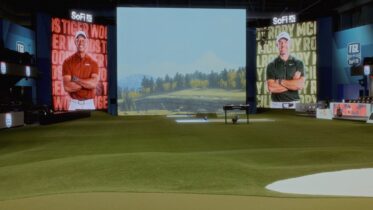A lot of the buzz around 4K displays is related to how spectacular these digital signage displays look. But the real value is in the fine details brought on by all those pixels, and their visual density really makes a difference when viewers step in to have a good look.
A 4K digital signage display shows every detail of a fine Swiss timepiece, for example, that’s being marketed by a jeweler. The same visuals on a 1080p HD screen will look amazing from a distance, but up close, the details that sell items like fine watches and jewelry are lost and the images look soft.
For decades, marketers have put up posters and lightboxes populated with visuals printed with hundreds of ink dots per inch. 4K allows professionals to go digital without making real compromises on visual clarity or color reproduction, giving them the ability to also use high impact full-motion media and change messages on demand over a network.
Close and Crisp
4K displays are the best option for content that people tend to consume in close quarters — like maps, directories and catalogs. All those available pixels per inch smooth text on screen and deliver granular levels of detail. When a consumer gets up close to a standard HD, they can see individual pixels and the gaps between them. This is not the case with 4K.
Business environments are particularly strong markets for 4K digital signage displays because of the detail these screens provide for high-resolution aerial and satellite imagery, and scans. A 4K screen has about 8 million pixels, meaning an 8 megapixel image can be viewed at its full, native resolution.
Revolutionizing Retail Through Technology
View the infographic to learn how digital technology is transforming the shopping experience. Download Now
Equipped with touch screen overlays, engineers and geologists working in fields such as oil and gas can easily see and collaborate on visuals on a large scale. This same concept applies to medical imaging, technical drawings and countless other types of visuals, where high-level design detail is required on a daily basis.
Going Bigger
The Samsung QMF series, which now includes a massive 98-inch 4K display, supports multiple inputs, including four HDMI ports. That makes it possible to run four independent 1080p HD visuals on four quadrants of one display, all at their native resolutions. In environments like control and security rooms, multiple inputs and a huge canvas negates the need for multiple displays, cables and switches. In corporate boardrooms, video conferencing is increasingly replacing simple conference calls; 4K displays will make the quality and experience even better.
These large 4K displays can also offer a cleaner, more impressive alternative to a 2×2 video wall installation with four smaller displays. With one large display replacing four, businesses can simplify mounting and cabling necessary for implementation while removing seams.
Retailers are using digital to create “endless aisle” touch applications in their stores, giving shoppers access to see and order goods not stocked in that store. 4K touch can also be used in museums and galleries, which often have vast archives of artifacts and works left in storage because of finite exhibit space. 4K enables curators to make super high-resolution visuals — from manuscripts to oil paintings — available to view and appreciate, on demand.
Content Challenges
While 4K looks amazing, it presents challenges to digital signage network operators because of all those pixels. More pixels, simply put, require more storage, bigger bandwidth and faster playback hardware. These elements all tend to increase costs and complexity.
The very large file sizes that are inherent to 4K also have a domino effect on a network and the supporting business. Much bigger files — as much as four times the size of standard HD video — could flood a local or wide area networks when they get transferred. Updating files from the cloud has implications on the size of the internet speed and location, as well as on the storage capacity of servers. That said, storage is cheap these days, as is bandwidth, and there are tools to manage network traffic so that moving big files around doesn’t grind everything else on a network to a halt. It just takes knowing the implications, and planning for them.
The larger issue, though, is content — or lack of content. Custom digital signage content is easily developed and output to the higher 4K resolution, but there’s still far less available from brands and content creators who design for broadcast and online TV, as well as online and mobile. Most of what consumers see on their home TVs and online is 720p and 1080p HD.
However, there is a little secret about using 4K, even if native content is hard to find: 1080p content upscaled to run on a 4K display panel still looks spectacular. By putting visuals meant for one screen on another with four times as many available pixels, upscaling does a great job saturating the colors.
The 4K Future
There’s no “if” about the prospects for 4K in digital signage; it’s when. 4K will supplant 1080p displays, and it’s just a matter of time for the content to catch up and use all those pixels.
Looking for more cutting-edge digital signage solutions? Check out our full line of innovative display technology.








